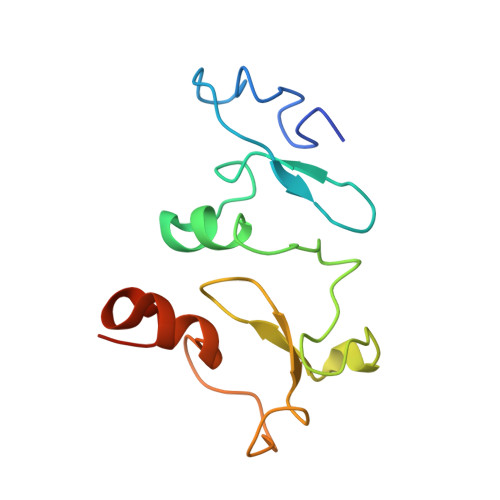Histone-binding of DPF2 mediates its repressive role in myeloid differentiation.
Huber, F.M., Greenblatt, S.M., Davenport, A.M., Martinez, C., Xu, Y., Vu, L.P., Nimer, S.D., Hoelz, A.(2017) Proc Natl Acad Sci U S A 114: 6016-6021
- PubMed: 28533407
- DOI: https://doi.org/10.1073/pnas.1700328114
- Primary Citation of Related Structures:
5VDC - PubMed Abstract:
Double plant homeodomain finger 2 (DPF2) is a highly evolutionarily conserved member of the d4 protein family that is ubiquitously expressed in human tissues and was recently shown to inhibit the myeloid differentiation of hematopoietic stem/progenitor and acute myelogenous leukemia cells. Here, we present the crystal structure of the tandem plant homeodomain finger domain of human DPF2 at 1.6-Å resolution. We show that DPF2 interacts with the acetylated tails of both histones 3 and 4 via bipartite binding pockets on the DPF2 surface. Blocking these interactions through targeted mutagenesis of DPF2 abolishes its recruitment to target chromatin regions as well as its ability to prevent myeloid differentiation in vivo. Our findings suggest that the histone binding of DPF2 plays an important regulatory role in the transcriptional program that drives myeloid differentiation.
- Division of Chemistry and Chemical Engineering, California Institute of Technology, Pasadena, CA 91125.
Organizational Affiliation:



















